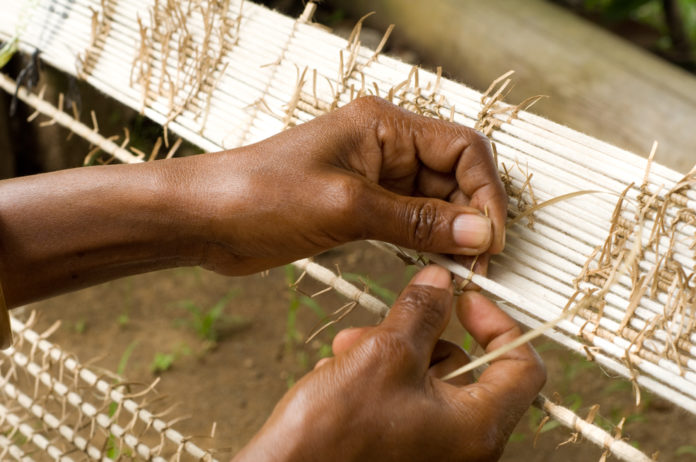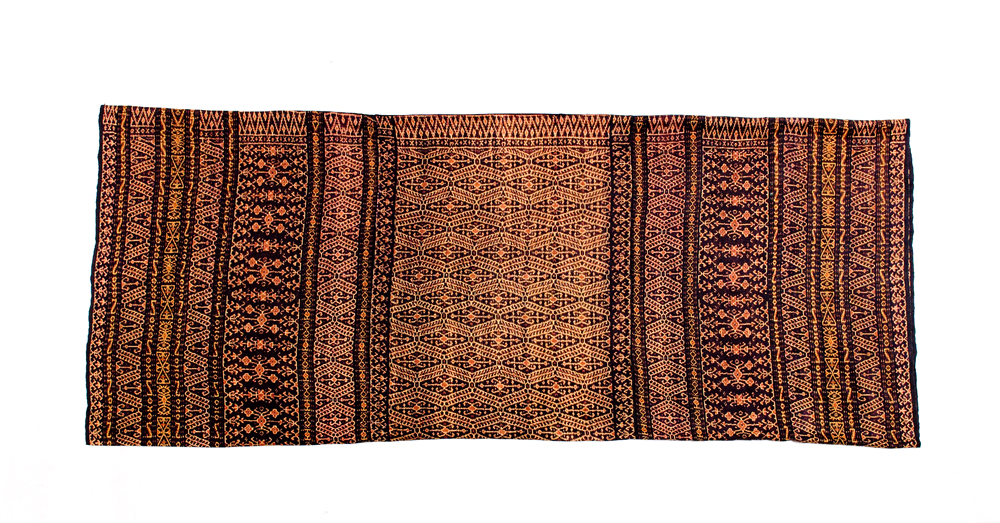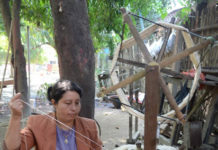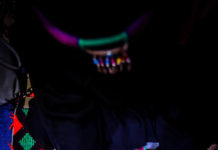
Flores as a part of East Nusa Tenggara, known for its small intricate and highly detail ikat pattern that requires a highly skilled weaver. Ikat Flores is made from cotton and usually woven by women with a backstrap loom. Ikat Flores is a warp ikat, which involves a resist-dyeing technique that uses water-resistant cord, tied to a bundle of warp yarns, then immersed in a dye bath to produced desired motifs when woven.
Cord for Ikat Flores usually made from leaves of lontar plant (Borassus flabellifer). Yarns dyed in a natural dye such as root from mengkudu (Morinda citirifolia), root of kunyit (Curcuma longa) plant, and leaves of indigofera plant.

Ikat Flores motifs range from intricate abstract of the small strip, repetitive geometric pattern, highly symbolic pattern such as Yoni, figurative pattern such as people riding horse, gecko, to floral pattern as the flower from kenari (plant form Genus Canarium). Some motifs have foreign influence such as patola, or roses. Every ethnic group in Flores has its distinct ikat design; consequently the pattern will signifies the ethnic identity of its wearer. Many ikat patterns have restricted use. For example, Lea Ramu pattern design could only be used by unmarried women.
In a marriage ceremony, the bride in Flores weaves ikat to be given to the groom as a feminine gift, to be exchanged later by the groom with a masculine gift such as money, jewellery or livestock. Ikat Flores is usually made into tubular sarong cloth that is used in both of daily life and special occasion. Women in Flores use it in almost every activity, from working in the field to sleeping in the night to be used as a blanket. They also use it to carry the baby or crops.
Spread in almost any region in Flores, some of weaving communities could be found in Maumere, Ende, Manggarai, Sikka, Ngada, Naga Keo, Watublapi, Nggela and Lembata. One weaving workshop, in particular, could be found in Sanggar Budaya Biransina Watublapi, Desa Watublapi, Kecamatan Hewoklo’ang, Kabupaten Sikka, Flores, East Nusa Tenggara. This workshop is initiated by a group of women weaver who is still producing weaving by hands in a traditional manner.




